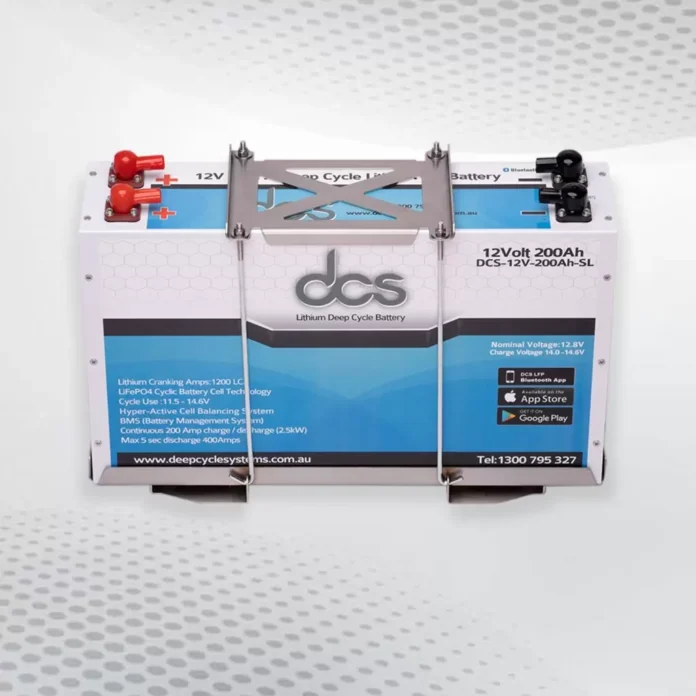Lithium batteries are well-known as a control source for vehicles, boats, and other applications. These batteries have some unique properties that make them ideal for these applications. Lithium is lightweight and resistant to damage from freezing temperatures and sulfuric acid, which can affect other types of batteries. Lithium cranking batteries are also more efficient than different types of batteries. When it comes to charging them back up, they last longer between charges. While still providing enough power when needed most.
Battery Stuff Information Base Article Content
Lithium cranking batteries are a type of lithium battery. They’re used in cars, boats, and RVs to provide power during starting.
Lithium cranking batteries are lighter than lead-acid batteries. Which means they can be smaller and more compact. They moreover have a longer life expectancy than lead-acid batteries. Because they don’t need water to operate, you can dump your battery without damaging its health or performance.
How does a Lithium Cranking Battery work?
Lithium cranking batteries demand high discharge rates. Which means they can handle the power needed to start a vehicle. They use an electric current that travels through their cells and your battery’s plates. When these plates get charged up enough, they will conduct electricity and produce electricity out of nothing but air!
There are two main types of lithium cranking batteries: single-use and rechargeable. Single-use lithium battery packs have all the necessary parts pre-assembled for quick installation. It would be best to connect them with cables or wires (depending on how you want them installed).
Lithium Deep Cycle Batteries
Lithium batteries are ideal for solar power systems because they’re more efficient than lead-acid batteries. They are completing a state of charge for up to five years. These lithium cranking batteries have a longer lifespan. And can get recharged hundreds of times without losing their ability to hold energy.
However, lithium-ion technology isn’t suitable for all applications. Particularly for those involving high currents or frequent cycling through deep discharge cycles. This issue arises when considering applications like electric vehicles (EVs) and hybrid vehicles (HEVs). These vehicles’ motors need high voltage. That becomes the cause of lithium-ion batteries losing efficiency as they get discharged over time. That results in reduced power output from the battery pack during periods. At the same time, its total capacity is not in use due to lackadaisical charging practices. Such as leaving EV batteries at partial charge overnight. So that charging takes place only once per day instead of several times daily. Like traditional automotive counterparts do today due.

What is the difference between AGM and Lithium?
AGM batteries are static and do not need maintenance. In the elements, they leave without fear of corrosion or water intrusion. It is making them ideal for lithium marine battery use. Lithium batteries are static and do not need maintenance. The significant difference between these two types of batteries is that lithium ones have a higher energy density than their non-lithium counterparts (i.e., they pack more punch per pound). Still, they weigh more due to their greater size and complexity when compared to AGMs. That makes them less suitable for applications where weight matters. Such as motorcycles or aircraft, since these vehicles keep enough light. So that there isn’t too much extra mass around its driver/pilot. Who might otherwise get bucked around during a flight!
The Difference Between Lithium Car, Marine, and RV Batteries
Lithium cranking batteries are for high-energy, high-discharge applications. These batteries can handle up to 10 amps of current and have a capacity that ranges from 1kWh to 30 kWh.
Lithium car batteries are for high-energy, low discharge applications. These lithium battery packs have higher power than their lithium marine battery counterparts. Still, they don’t last as long before needing a recharge or being replaced by a new one after heavy use (like an RV).
You must inquire about and know what you’re working on with any battery framework.
Lithium batteries need less maintenance, and they have a longer lifespan. They also produce less waste material than lead-acid batteries. Since you can use lithium batteries to power your vehicle, they are friendly in many ways:
- Lithium cranking batteries do not contain toxic materials. Like lead (which can harm the environment), sulfuric acid (a pollutant), or mercury (a heavy metal).
- The water used for manufacturing lithium-ion technology is at least 80% recycled water. That would otherwise go down the drain. This means less wastage of water produced by manufacturing processes. And fewer chemicals dump into rivers and oceans where they can pollute ecosystems if they aren’t disposed of afterward!
Conclusion
Lithium cranking batteries are an excellent choice for any vehicle with a starting battery. These batteries can be designed to work with your car or truck, van, or RV and will last longer than other batteries. The main difference between these batteries is that they have a higher energy density than AGMs. Make them lighter, so they fit better into tight spaces in your vehicle. Lithium also has more outstanding safety standards due to its handling more power.
